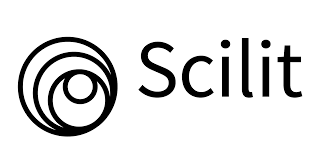Hypercommodification in Indonesian Mass Media and its Impact on Society: A Study and Suggestions
DOI:
https://doi.org/10.38043/commusty.v1i2.4136Keywords:
Sociology, Communication, Indonesian Mass Media, Hyper-CommunicationAbstract
This research focuses on increasing the commodification of media products, the proliferation of consumerist values, and their impact on media content, ownership, and political discourse. The findings show that the hyper-commodification of society in Indonesia has led to significant changes in the mass media industry, focusing on profit-driven media products and decreasing independent and diverse media content. This research also highlights the need for media literacy and education initiatives to counteract the effects of consumerism and to promote critical and informed media consumption. Overall, this research sheds light on the complex and interrelated processes of commodification, consumerism and mass media, and their impact on Indonesian society and culture.
References
Astuti, ayu. (2018). ANALISA STRATEGI KOMUNIKASI PEMASARAN ONLINE DAN OFFLINE PADA INDUSTRI PERHOTELAN DI BALI TERHADAP KEPUTUSAN PEMBELIAN WISATAWAN EROPA. Jurnal Ilmiah Dinamika Sosial, 2(1), 13-34.
Boczkowski, PJ (2004). Digitalisasi Berita: Inovasi Surat Kabar Online. Cambridge, MA: Pers MIT.
Chang, H.-J. (2010). Tidak Begitu Kosmopolitan: Kebangkitan Konsumerisme di Asia. Perbedaan pendapat, 57(3), 59-64.
Fajar, D. P. (2020). MELACAK PENYEBAB AGRESIVITAS VERBAL DI MEDIA SOSIAL BERDASARKAN PERSPEKTIF KAJIAN COMMUNIBIOLOGY. Jurnal Ilmiah Dinamika Sosial, 4(2), 191-210.
Fiske, J. (1992). Ekonomi Budaya Fandom. Di LA Lewis (Ed.), Penonton yang Memuja: Budaya Penggemar dan Media Populer (hlm. 30-49). New York, NY: Routledge.
Hakim, L., & Putro, W. E. (2022). NEW MEDIA DALAM MEMBANTU KINERJA HUMAS POKDARWIS MEMPROMOSIKAN WISATA ALAM DAN BUDAYA DI PONOROGO. Jurnal Ilmiah Dinamika Sosial, 6(1), 69-85.
Jarvis, J. (2010). Apa yang Akan Dilakukan Google? New York, NY: HarperBusiness.
Kannengiesser, U. (2002). Komodifikasi Budaya. Kajian Budaya, 16(2), 247-261.
Liana, C., & Soemardjo , H. A. (2022). Media Literacy in the Family (Descriptive Study of parents’ Actions of SDIT ALFAUZIEN Depok Students in Assisting the Use of Media in Children). Journal of Communication Studies and Society , 1(1), 27-37.
Mujiati, D. W., Wibawa, B., Sylvia, C., & Purnamadani, T. H. (2020). INSTAGRAM: INTEGRATED MARKETING COMMUNICATION (IMC) SEBAGAI STRATEGI PENJUALAN BAGI MAKE UP ARTIS (MUA). Jurnal Ilmiah Dinamika Sosial, 4(2), 211-224.
M rosita, diana, & pratiwi, nuning indah. (2018). STRATEGI KOMUNIKASI DALAM SOSIALISASI LITERASI MEDIA DI DINAS KOMUNIKASI DAN INFORMASI (DISKOMINFO) PROVINSI BALI. Jurnal Ilmiah Dinamika Sosial, 2(1), 1-12. osco, V. (2004). Ekonomi Politik Komunikasi: Pemikiran Ulang dan Pembaruan. London: Bijak.
Pratiwi, N. I. (2017). PENGGUNAAN MEDIA VIDEO CALL DALAM TEKNOLOGI KOMUNIKASI. Jurnal Ilmiah Dinamika Sosial, 1(2), 202-224.
Schiller, D. (1991). Culture, Inc.: Pengambilalihan Perusahaan atas Ekspresi Publik. Oxford: Oxford University Press.
Sudaryati, M. Y., & Kalfika, K. D. (2019). FRAGMENTASI SEMIOTIK MEDIA CETAK LOKAL BERBASIS LOCAL WISDOM NEWS DI BALI (2018). Jurnal Ilmiah Dinamika Sosial, 3(1), 126-140
Sucitawathi, dewi. (2017). PARTISIPASI POLITIK PEREMPUAN DAN DISKRIMINASI MEDIA. Jurnal Ilmiah Dinamika Sosial, 1(1), 31-37
Suyasa, I. M. ., Putri, P. I. D., & Suparna, P. (2022). The Tradition of Cultivation Theory And The Spiral of Silence Media. Journal of Communication Studies and Society , 1(1), 17-21.
Terlouw, K. (2015). Industri Media Indonesia: Studi Kasus Kepemilikan dan Kontrol. Jurnal Komunikasi Asia, 25(5), 422-436.
Downloads
Published
How to Cite
Issue
Section
License
Copyright (c) 2022 Raihan Muzhaffar Shidqi, Jamiati KN

This work is licensed under a Creative Commons Attribution-ShareAlike 4.0 International License.















